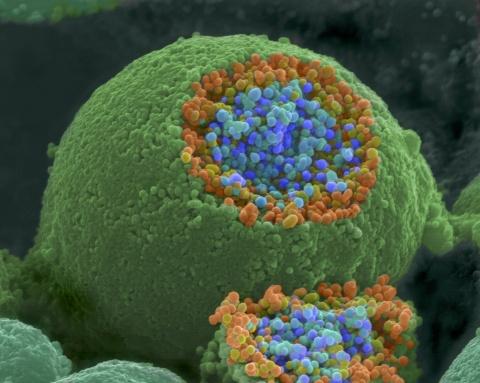
Research authored by members of the Duke Neurology Department published during the final month of 2021 advanced our knowledge of stroke, epilepsy, dystonia, and other conditions. Highlights from the eight peer-reviewed journal articles our faculty contributed to this December include an analysis of the optimal approach to manage blood pressure among patients with stroke co-authored by Shreyansh Shah, MD, a device to isolate and purify biomarkers of Alzheimer’s disease developed by Laurie Sanders, PhD, and colleagues, and an examination of patterns of opioid use among patients who have had a stroke. Read the paragraphs below for short summaries of each of these and other articles, and find links to the original articles themselves.
Stroke
- Michael “Luke” James, MD, contributed to a new article that proposes a single pipeline of a multi-task model for end-to-end hemorrhage segmentation and risk estimation for intracerebral hemorrhage. The new model involves a segmented hemorrhage volume clinical features such as CT angiography spot, Glasgow Coma Scale, age to predict the ICH stability, and state-of-the art machine learning techniques. Read the full article in Medical and Biological Engineering and Computing.
- Shreyansh Shah, MD, contributed to a new study that sheds light on the optimal approach to blood pressure management in acute ischemic stroke. Examining data from patients with acute ischemic stroke and uncontrolled blood pressure,Shah and colleagues found that the initial use of an intermittent or continuous infusion antihypertensive did not significantly impact the time to alteplase administration. Read the full article in the American Journal of Emergency Medicine.
- While people with intracerebral hemorrhage often experience severe headaches or other medications that necessitate opioid medications, prescribing patterns among this patient group have not been well described. In a retrospective cohort study, a team including Brian Mac Grory, MB BCh, MRCP, examined prevalence and risk factors for short and longer-term opioid use in patients with intracerebral hemorrhage. They found that inpatient opioid use was common, but that inpatient opioid use does not necessarily lead to a high rate of long-term opioid dependence in this patient group. Read that study in Neurocritical Care.
Memory Disorders
- Laurie Sanders, PhD, was part of a team that designed and fabricated a surface acoustic wave-based acoustofluidic separation device to isolate and purify biomarkers of Alzheimer’s disease. Their device obtained label-free detections of surface-enhanced Raman scattering and electrochemical immunoassay of clinical plasma samples with high sensitivity and specificity, for both Alzheimer’s patients as well as health controls. Read the full article in Biosensors & Bioelectronics.
Epilepsy, Sleep, and Clinical Neurophysiology
- Understanding the cellular and circuit mechanisms underlying development of temporal lobe epilepsy will provide a foundation for improved therapies. Senior authors James McNamara, MD, PhD, and Enhui Pan, PhD, and Ram Puranam, PhD, studied a model in which an episode of prolonged seizures is followed by recovery lasting two weeks before emergence of spontaneous recurrent seizures. Read what they found in the latest issue of eNeuro.
Parkinson’s and Movement Disorders
- A new article in Data in Brief by senior author Nicole Calakos MD, PhD, Kunal Shroff, Zachary Caffall, MS, and colleagues presents quantitative subcellular compartment-specific proteomic data from wildtype and DYT-TOR1A heterozygous mouse embryonic fibroblasts basally and following thapsigargin treatment. The data presented provide subcellular compartment-specific proteomic information within a dystonia model system both basally and under cellular stress. Read that article here.
- Current rating scales for Tourette’s syndrome rely on subjective self-estimates or brief assessments to estimate tics. A team including Kathryn Moore, MD, developed a more objective approach: wearable sensors that capture voluntary and tic movements. The device captured tics with greater than 96% accuracy, sensitivity, and specificity, potentially allowing for improved, tailored care for people with Tourette’s. Read the full study in Clinical Neurophysiology.
Neuromuscular Disorders
- Recruiting enough clinical trial patients for rare, fatal diseases such as amyotrophic lateral sclerosis (ALS) is difficult, just as it is difficult for patients with these diseases to find and enroll research studies for which they’re eligible. In a new article for the Journal of Medical Internet Research, Rick Bedlack, MD, PhD, and colleagues describe how the federal Agency for Toxic Substances and Disease Registry’s (ATSDR) National ALS Registry is linking people with ALS to scientists who are conducting research, clinical trials, and epidemiological studies. Read that study here.